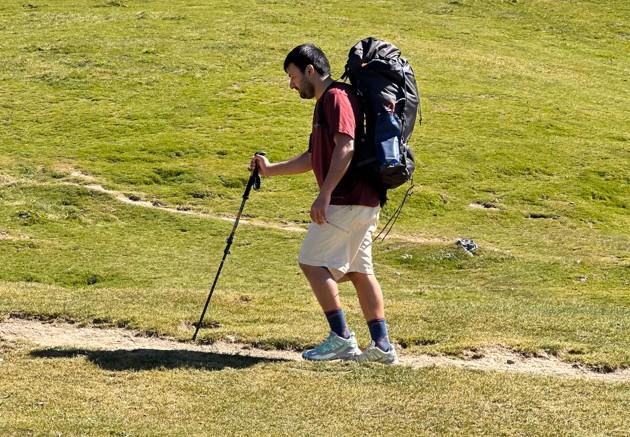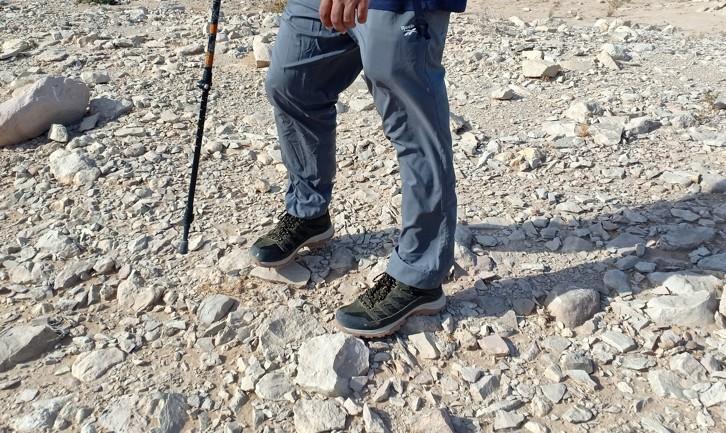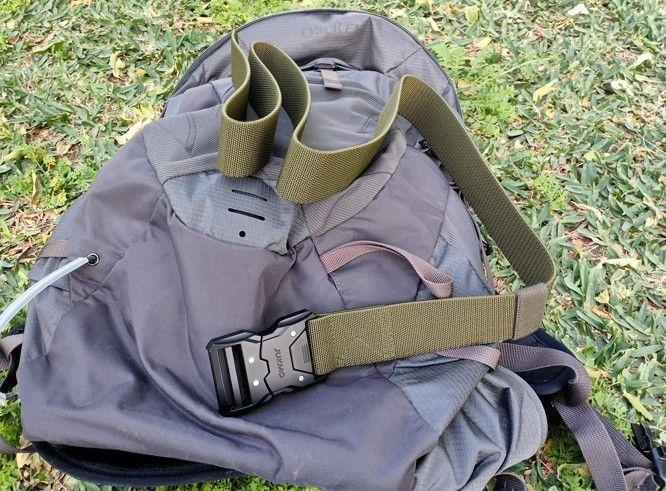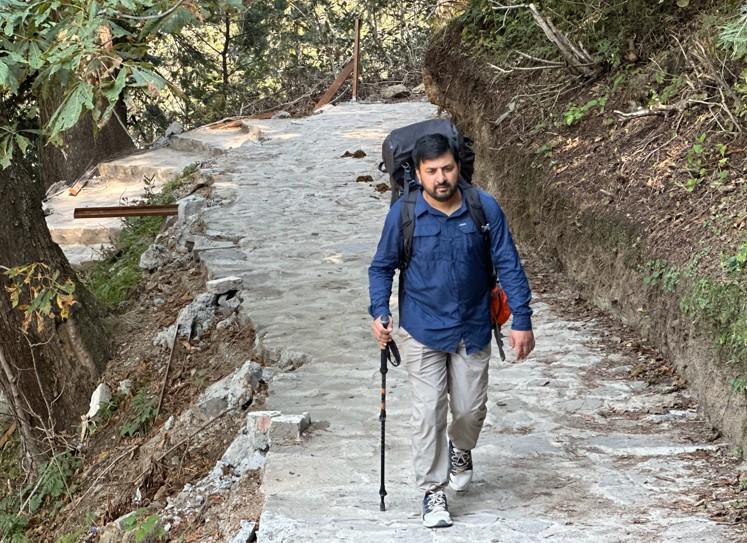I’ve hiked through sudden snowstorms, blistering heat, and enough rain to soak through to the soul—and I’ve made just about every gear mistake along the way. From soggy cotton shirts that nearly gave me hypothermia to stiff boots that chewed up my feet, I’ve learned, sometimes the hard way, what truly works on the trail. This isn’t some recycled list from a catalog. It’s a real-world guide based on years of experience—gear that saved me, mistakes that humbled me, and hard-won lessons that turned grueling hikes into joyful ones. If you want to know what to wear hiking, not in theory, but in practice, this is for you.
Hiking Clothes: What to Wear Hiking
Understand the Fabrics That Work
Over the past few years, we’ve tested all kinds of hiking clothes. And here’s what we’ve learned—your choice of fabric can make or break a hike. Thinking of wearing cotton? Don’t. Cotton kills—literally. On a rainy stretch of the hiking trail, our cotton shirts turned into cold, soggy traps.
In contrast, synthetic fabrics like polyester and nylon kept us dry by wicking sweat and drying quickly. We strongly recommend avoiding cotton at all costs—it holds moisture, chills you down fast, and takes forever to dry out in the wild.

For insulation, fleece or down does a great job of retaining heat, even when it’s damp. For your outer shell, go with something waterproof and breathable—Gore-Tex is always a solid choice.
As for socks, we swear by Merino wool. It saved our feet from blisters on a 10-mile trek through the Rockies. Bottom line? The right fabric choice can save your day—or your hike.
Why Wear Layers?
Layering isn’t just a smart idea—it’s survival. On one of our summit hikes, temperatures dropped from 50°F to 20°F in just a few hours. What saved us? Our dialed-in layering system. Here’s how it broke down:
- Base Layer: We wore moisture-wicking shirts, mostly Merino wool. They kept us comfortable in both heat and cold.
- Insulation: Lightweight fleece or puffy jackets added warmth without bulk. We chose them for their packability when conditions shifted.
- Shell Layer: A waterproof outer layer shielded us from a surprise storm that could have ended our day early.
One crucial lesson: if you’re cozy at the trailhead, you’ll probably be overheating an hour later. Shed layers as you move. We figured this out the hard way—after sweating through three shirts on a deceptively sunny Vermont trail.
And here’s another key tip: don’t overdress at the beginning of your hike, even if you feel a little chilly. As soon as you get moving, your body heats up fast, and you’ll end up wanting to strip layers. Personally, I like to start just slightly cold—it’s a sign I’ve dressed right. Hiking is physical, and you’ll start sweating sooner than you think, even in brisk weather.
Base Layer
A snug, moisture-wicking base layer is non-negotiable. We’ve put several to the test, and Merino wool is a clear winner—it kept us dry through a brutally sweaty Grand Canyon hike. One golden rule: never wear cotton as your base. Trust us, damp underwear on a long trail is something you never want to deal with.
Shirts
When it comes to hiking shirts, go for lightweight, breathable fabrics. Synthetic tees consistently outperform cotton by a mile.
On one hike, Columbia Silver Ridge Utility Lite shirts saved us from painful sunburn while letting our bodies breathe. Out there, performance matters more than looks.
Hiking Pants or Shorts
Flexible pants make a huge difference on the trail. Stiff, restrictive options cause rubbing, chafing, and an all-around miserable day. Convertible pants were lifesavers when the weather turned on us.

During summer hikes, I wear hiking shorts that help me stay comfortable on the trail
Insulated Jacket
Think of an insulated jacket as your emergency blanket in wearable form. On chilly alpine ridgelines, our packable down jackets were the reason we didn’t freeze. Patagonia’s Nano Puff has become our go-to—it even dried quickly after an unexpected drizzle.
Rain Clothes
Rain gear isn’t optional. Even on clear-sky days, we always pack a raincoat and cover—weather can flip fast. Our Marmot PreCip jacket and waterproof pants once saved us from hypothermia during a heavy downpour. Don’t take chances.
Underwear
Comfort on the trail starts with your hiking underwear. We’ve tested plenty, and synthetic or Merino wool briefs consistently prevented chafing on 15-mile treks. ExOfficio’s antimicrobial pairs even lasted a full week without stink. That’s the kind of trail-tested performance you don’t want to skimp on.
Hiking Footwear
Hiking Shoes
Footwear can make or break your hike—it’s that important. After miles of blisters and bulky boots, we finally found our stride with trail runners. Unless you’re carrying a heavy pack or need extra ankle support, we say skip the boots. Trail runners drain faster during water crossings, while boots left us with soggy feet and long delays.
Another solid pick we’ve used is the Columbia Crestwood. These shoes strike a great balance between grip and comfort. Even after logging miles, my feet didn’t feel sore or tired—and the best part? No break-in period needed. I slipped them on right out of the box and hit the trail comfortably.

And grip matters—Vibram soles were a game-changer on slick, wet rocks. One critical tip: break in your shoes before the hike. We’ve made the rookie mistake of testing new footwear on day one and paid the price in blisters.
Socks
For socks, we recommend Merino wool. It prevented blisters during a 10-mile Rocky Mountain trek. These socks caused no blisters; neither did they stink, even after 3 days. When it comes to socks, avoid cotton—it’s a trail-tested disaster. Learn about the different materials used in hiking socks and choose the right one for your needs.
Sandals
Don’t overlook hiking sandals—they can be just as essential as your boots or trail runners. For us, the right pair made a huge difference. A lightweight, comfortable sandal can double as a camp shoe and be a lifesaver during river crossings. Chacos were our go-to for both. They held up well on rocky terrain and felt great after a long day in hiking shoes.
Other Hiking Accessories
Sunglasses
On hikes, sunglasses also play a vital role. Polarized lenses like Oakley’s cut glare on snowfields. On alpine hikes, they’re as critical as warm clothing. We’ve seen cheap pairs snap halfway through a trek, so trust us: durability beats fashion when you’re miles from a trailhead.
Hats
Headwear is a trail essential. Ball caps do fine for some sun protection, but in desert conditions or high elevation, a wide-brimmed hat is a game changer. It shields your face, neck, and ears. On one frosty morning in the Rockies, a simple fleece beanie kept our ears from going numb. Always pack something for both sun and cold.
Gaiters
Gaiters might seem extra, but once you hike with them, you’ll never go back. Dirty Girl Gaiters kept trail grit and pebbles out of our shoes in the dusty Southwest. Take some good pairs of gaiters when you hike in the snow.
Belt
A good hiking belt doesn’t just keep your pants up—it makes your hike more comfortable. My JUKMO Tactical Belt has held up to loaded climbs and never dug into my waist.

It’s lightweight, secure, and doesn’t loosen with movement. Definitely worth upgrading from a flimsy strap.
Bug Spray
When it comes to bug spray, we’ve learned the hard way: not all repellents are equal. On a mosquito-ridden trip, Picaridin spray outperformed DEET and didn’t leave our skin feeling greasy or sticky. If you’re heading into bug territory, don’t skimp—your sanity might depend on it.
What Not to Wear (Lessons I Learned the Hard Way)
It’s easy to talk about what to wear on a hike—but knowing what not to wear is just as important. I learned these lessons through trial, error, and a few painful miles on the trail.
Cotton Kills
Cotton might feel comfy at home, but on the trail, it’s a disaster. I wore a cotton tee on a damp hike and ended up cold, clammy, and miserable. It traps moisture and chills you fast—leave it at home.
The Wrong Footwear
Untested boots ruined what should’ve been a great Zion trip. I once wore stiff, heavy shoes straight out of the box—huge mistake.
Always break in your footwear and match it to the terrain. On the Minnesota trails, trail runners were a blessing.
Overdressing
Layering is smart, but overdoing it isn’t. I hiked a mild trail in Oregon wearing a thick flannel and ended up drenched in sweat. Start slightly cool—you’ll warm up fast.
Skipping Rain Gear
Even if the forecast looks clear, take rain protection. I once left my rain jacket behind on the Skyline Trail—bad call. A surprise drizzle turned into a soaking, uncomfortable march. Always pack it.
Cheap Socks
Thin, synthetic bargain-bin socks gave me blisters and regret after just a few miles. Quality socks—like Merino wool—are worth every cent. Your feet will thank you.
Wearing Jeans
Jeans might look rugged, but they’re heavy, stiff, and take forever to dry. I slogged through a slot canyon in Utah in denim and it felt like dragging around wet sandbags. Never again.
What to Bring for Hot Weather Hiking
On hot-weather adventures, we wore lightweight and ventilated shirts. Use breathable shorts or convertible pants, which help keep the body cool and comfortable. Lastly, a wide-brimmed hat and a hydration pack are also recommended for hot-weather hikes.
Recommended Gear:
- Moisture-wicking t-shirt
- Breathable shorts or convertible pants
- Wide-brimmed hat
- Sunglasses
- Lightweight hiking socks
- Trail runners or ventilated hiking shoes
- Hydration pack or water bottles
- Sunscreen
What to Bring for Cold Weather Hiking
Cold weather always demands layers of clothing. A perfect layering system may consist of a base of Merino wool, an insulation layer of fleece, and a top layer with an insulated jacket. Additionally, windproof gloves and thermal leggings help keep the hiker warm. Don’t forget a balaclava and warm wool socks.
Recommended Gear:
- Merino wool base layer (top and bottom)
- Fleece or synthetic mid-layer
- Insulated and windproof outer jacket
- Thermal leggings or insulated pants
- Wool socks
- Insulated gloves
- Balaclava or beanie
- Waterproof boots or insulated footwear
Rain and Mud: What to Bring
For rainy and humid weather, waterproof jackets, pants, and proper layers are important to keep the body warm and dry. The quick-dry layers underneath help maintain body heat. Finally, we recommend Microspikes for icy trails to avoid slipping on the ice.
Recommended Gear:
- Waterproof rain jacket
- Waterproof pants
- Quick-drying base layers
- Gaiters (for mud and debris)
- Microspikes or traction devices (for icy conditions)
- Waterproof hiking boots or shoes
- Wool or synthetic socks
- Backpack rain cover
Conclusion
Hiking really is a blessing—if you bring the right gear. We’ve made our fair share of mistakes: cotton shirts, stiff boots, forgetting rain jackets. But with time (and a few soggy miles), we learned. It’s not about looking stylish—it’s about staying dry, warm, and blister-free. Whether you’re heading into desert heat or cold mountain fog, what you wear matters more than you think. Learn from us, skip the bad gear, and pack smart. And yes—don’t forget the rain jacket.
